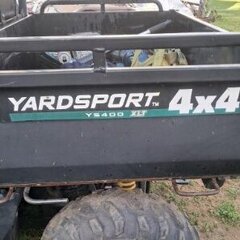2011 HS 700 EFI Radiator Fan Help
-
Similar Topics
-
By Sisco
Does any have a part number for the fuel pump sock for a 2016 challenger 700 efi. Does not show on any parts diagram but the old pump has one on it.
-
By Jim D
MSU 500 does nothing when you turn the key. No power to display, fuel pump or anything. Come back a while later and everything works perfect. Starts right up. Battery is fully charged. Could this be the ignition going bad. When it doesn't power up I've found nothinf that will correct it other then waiting and trying later.
-
By BernieG
I could really use some help identifying some disconnected components on a Yard Sport YS400. The first part is this pipe, which comes out of the exhaust port area or the cylinder. It looks like it had a piece of rubber hose on it, but the hose is gone, and I have no idea what it was previously connected to.
The second item is this vacuum valve looking thing. Again only one line is still attached. What is it's function and what other lines should be connected to it?
The last thing is this hose, which exits the side top of the fuel tank (not the fuel line hose) but is not connected to anything
Any help the community could provide would be greatly appreciated. This UTV belongs to a friend, and I am trying to help him get it running correctly for his kids.
-
By buffalo_b_rad
My intimidator is new less than 15 hours on it and it is overheating. Even on short rides less than 1 mile it overheats. Fan does not turn on at proper temps, checked relays and fuses and they check good. Any suggestions?
-
By Chile
I have a 2018 Massimo 700 MSU with the Delphi MT05 ECU.
I have seen an alternative ECU reset procedure that involves running the engine at WOT for 5 seconds in neutral and then shutting down while throttle still at WOT. The articles include comments that the rev limiter will prevent engine overspeed ad attendant damage.
1. Is this actually a recommended procedure for restting the ECU on a 700 MSU?
2. What is the rev limited maximum RPM for the 700 MSU?
I initiated this procedure but when the RPM exceeded 6000 I immediately terminated the process. It simply seemed excessive to me to continue.
Any and all responses are greatly appreciated.
Chile
-






Recommended Posts
Join the conversation
You can post now and register later. If you have an account, sign in now to post with your account.
Note: Your post will require moderator approval before it will be visible.